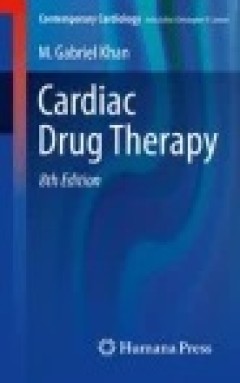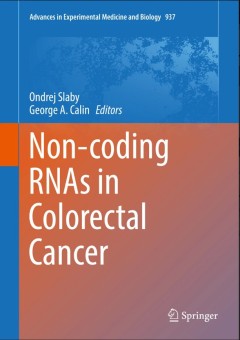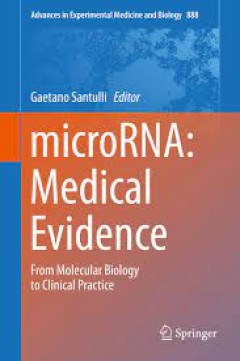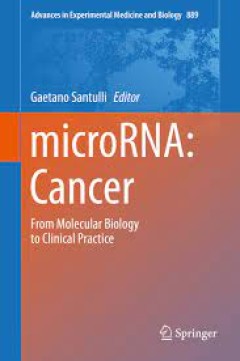Filter by

Novel Chemical Tools to Study Ion Channel Biology
This volume describes chemical approaches to assess ion channel structure, function and pharmacology. Topics discussed include the use of engineered ionizable side chains to obtain information on permeation pathways and the local environment; the modification of engineered cysteine side chains, including cysteine scanning mutagenesis and the attachment of fluorescent probes and bio-reactive tet…
- Edition
- 1
- ISBN/ISSN
- 978-1-4939-2844-6
- Collation
- VIII, 154
- Series Title
- Advances in Experimental Medicine and Biology
- Call Number
- -

Cardiac Fibrosis and Heart Failure: Cause or Effect?
The unique biology of cardiac fibroblasts and related cells, such as cardiac myofibroblasts and valvular interstitial cells, distinguish them from other fibroblastic cells, a concept that is only beginning to be widely appreciated. Further, the natural signals that stimulate and inhibit cardiac fibrosis within these cells are not well understood. This volume compiles articles that address the m…
- Edition
- -
- ISBN/ISSN
- 978-3-319-17437-2
- Collation
- -
- Series Title
- -
- Call Number
- 611

Cardiac Cytoarchitecture : How to Maintain a Working Heart
This book presents a collection of expert reviews on different subcellular compartments of the cardiomyocyte, addressing fundamental questions such as how these compartments are assembled during development, how they are changed in and by disease and which signaling pathways have been implicated in these processes so far. As such, it offers the first overview of the cell biology of heart diseas…
- Edition
- -
- ISBN/ISSN
- 978-3-319-15263-9
- Collation
- -
- Series Title
- -
- Call Number
- 611

The Holobiont Imperative
This book examines how the growing knowledge of the huge range of animal-bacterial interactions, whether in shared ecosystems or intimate symbioses, is fundamentally altering our understanding of animal biology. Individuals from simple invertebrates to human are not solitary, homogenous entities but consist of complex communities of many species that likely evolved during a billion years of coe…
- Edition
- 1
- ISBN/ISSN
- 978-3-7091-1896-2
- Collation
- X, 155,51 b/w illustrations, 6 illustrations in colour
- Series Title
- The Holobiont Imperative
- Call Number
- -

Antibacterial Surfaces
Antibacterial Surfaces’ covers the advances being made in the design of antibacterial surfaces, which have the ability to either prevent the initial attachment of bacterial cells, or kill any cells that come into contact with these surfaces. This book discusses the mechanisms associated with the attachment of bacteria to surfaces and the main strategies currently being employed to control …
- Edition
- Ed. 1
- ISBN/ISSN
- 978-3-319-18594-1
- Collation
- V, 172
- Series Title
- -
- Call Number
- 574.87 ANT a

Aniridia: Recent Developments in Scientific and Clinical Research
The aim of this book is to highlight the latest findings in Aniridia research. Aniridia, meaning “without iris”, is a rare genetic disorder affecting vision, characterized by the incomplete formation of the iris (the coloured part of the eye that surrounds the black pupil). It may also cause other segments of the eye to be under-developed such as the optic nerve and the macula (the central …
- Edition
- Ed. 1
- ISBN/ISSN
- 978-3-319-19779-1
- Collation
- VIII, 192
- Series Title
- -
- Call Number
- 574.87 ANI a

Animal Cell Culture
Animal cells are the preferred “cell factories” for the production of complex molecules and antibodies for use as prophylactics, therapeutics or diagnostics. Animal cells are required for the correct post-translational processing (including glycosylation) of biopharmaceutical protein products. They are used for the production of viral vectors for gene therapy. Major targets for this therapy…
- Edition
- Ed. 1
- ISBN/ISSN
- 978-3-319-10320-4
- Collation
- XII, 763
- Series Title
- Cell Engineering
- Call Number
- 574.87 ANI a

Non-coding RNAs in Colorectal Cancer
This is the first book to provide a broad framework for obtaining an in depth understanding of the state-of-the-art knowledge on abnormalities of non-coding RNAs found to be associated with colorectal cancer pathogenesis. Readers will discover possible mechanisms underlying the substantial roles played by non-coding RNAs in molecular hallmarks of colorectal cancer.This work further provides the…
- Edition
- 1
- ISBN/ISSN
- 978-3-319-42057-8
- Collation
- VIII, 252
- Series Title
- Advances in Experimental Medicine and Biology
- Call Number
- -

microRNA: Medical Evidence From Molecular Biology to Clinical Practice
This volume explores microRNA function in a wide array of human disorders, providing a clinical basis for precision medicine and personalized therapies using these molecules. The twenty-one chapters, all authored by internationally-renowned experts, open with an introduction contextualizing microRNA manipulation within today’s initiatives towards precision medicine. The following chapters exp…
- Edition
- -
- ISBN/ISSN
- 978-3-319-22671-2
- Collation
- -
- Series Title
- -
- Call Number
- -

microRNA: Cancer From Molecular Biology to Clinical Practice
This volume thoroughly explores of the functional role of microRNAs in cancer. It not only expertly describes the molecular mechanisms underlying the malignant transformation process but also compiles cutting-edge research on microRNAs in several forms of cancer, including colorectal cancer, pancreatic cancer, leukemia/lymphoma, prostate cancer, lung cancer, ovarian cancer, and bone cancer. Dis…
- Edition
- -
- ISBN/ISSN
- 978-3-319-23730-5
- Collation
- -
- Series Title
- -
- Call Number
- -
 Computer Science, Information & General Works
Computer Science, Information & General Works  Philosophy & Psychology
Philosophy & Psychology  Religion
Religion  Social Sciences
Social Sciences  Language
Language  Pure Science
Pure Science  Applied Sciences
Applied Sciences  Art & Recreation
Art & Recreation  Literature
Literature  History & Geography
History & Geography